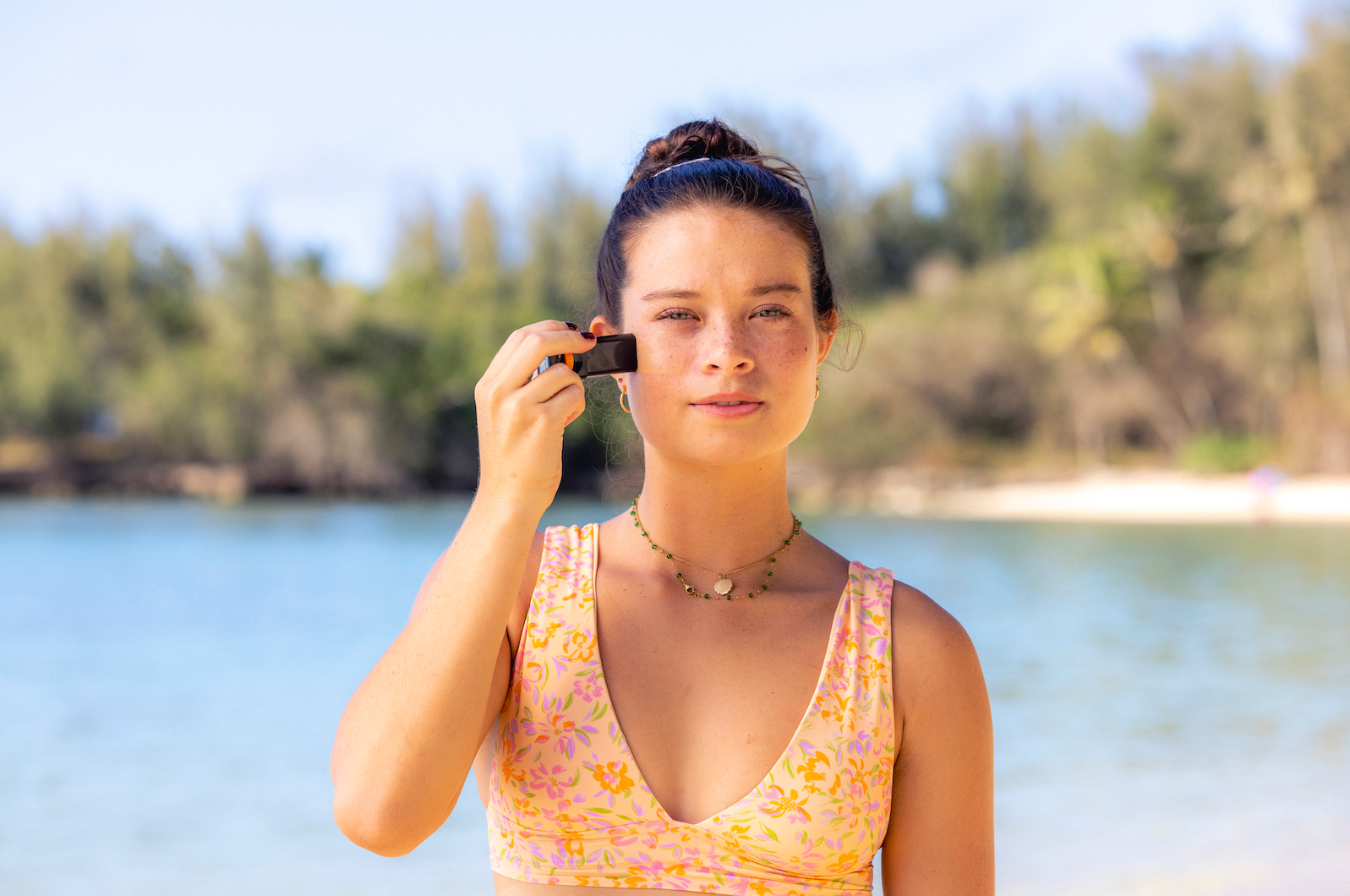How Often Do You Really Have to Reapply Sunscreen?

This Vertra guide answers all of your questions about reapplying sunscreen to help you make sure your skin stays well-protected.
Most people apply sunscreen wrong—that is, they don’t apply it often enough. In fact, research shows that nearly 80% of us don’t know how long sunscreen lasts once applied.
So, while you’ve likely heard it’s good to keep lathering up while you’re in the sun throughout the day, how often do you really have to reapply sunscreen? The official recommendation from dermatologists is to apply sunscreen on dry skin 15 minutes before sun exposure and reapply at least every two hours, no matter the SPF level. After two hours, sunscreen becomes less effective, leaving your skin exposed to UV damage.
While the two-hour rule applies to all sunscreens, there are specific times and activities when you should reapply even more frequently to ensure the best protection for your skin. You should always follow the application directions on your sunscreen’s label, but we understand that these rules can often leave people with questions: Does the SPF level influence how often you should reapply? What if you go into the water? Should you still reapply if you’re indoors?
In this guide, we’ll break down answers to those questions and share tips for applying sunscreen so your skin remains protected all day long—whether you’re catching rays at the beach, going for a walk in the shade, or hanging out inside.
How often you should reapply sunscreen: factors to consider
At the two-hour mark, ingredients start to degrade in both chemical and mineral ingredients. And while many people think higher SPFs protect you longer, this isn’t true. SPF refers to what percentage of UV rays are blocked.
For example, SPF 30 blocks 97% of UV rays and SPF 50 blocks 98%, but it has no impact on duration of protection. Bottom line: don’t let sunscreen labeled “SPF 100” lead you into a false sense of security—you still need to reapply at least every two hours.
While the two-hour rule is usually a safe bet, there are several reasons why you may want to reapply sunscreen more often:
- Exposure to water or sweat:
Any moisture can cause sunscreen’s effectiveness to degrade faster. If you’re in the water or sweating, you’ll likely want to reapply sunscreen more often to maintain effective coverage.
No sunscreen is fully “waterproof”—in fact, the FDA deemed the term misleading in 2011, and requires sunscreens to use the label “water-resistant” when it applies. Some sunscreens, like Vertra’s, offer water resistance by adding ingredients to help them better stick to your skin and maintain SPF protection after prolonged exposure to water. These sunscreens are required to list how long they offer water resistance, so pay attention to the label.
For example, all of Vertra's face sticks are water resistant for up to 80 minutes. Regardless of how long you’re in the water, whether the full 80 minutes or just a dip, it’s always best to reapply once you exit the water.
- Skin sensitivity:
If you have sensitive skin or photosensitive skin (skin that is more sensitive to UV light), you might need additional protection. Speak with your doctor or dermatologist to see if you require higher SPF or need to reapply more often. Also be on the lookout for sunscreen made specifically for sensitive skin such as Vertra’s Sensitive Light White Face Stick SPF 30.
- UV index:
UV index varies depending on the time of day, time of year, and location. Typically, the index is higher between 10am and 2pm and in the summer months. Some areas of the world have a higher UV index than others. For example, Australia and New Zealand average more than 11 on the UV index. In the U.S., regions and states closer to the equator—such as Southern California and Hawaii—also have high UV indexes. Be sure to check the UV index and reapply sunscreen more often if it’s high.
Best practices when applying sunscreen
Staying protected from UV rays throughout the day doesn’t have to be a challenge. Make your suncare routine even easier with these quick tips:
- Start with a good foundation:
At least 15 minutes before your first sun exposure, apply a thorough layer of SPF 30 or higher, preferably broad spectrum and water resistant depending on your activities, and reapply from there.
- Reapply thoroughly:
Reapplying sunscreen doesn’t mean just getting your face and neck. Don’t forget to cover your entire body, including often-forgotten body parts like your ears, the tops of your feet, and even your scalp. The average adult needs about an ounce of sunscreen to provide full coverage, so don’t skimp out!
-
Set reminders: If you think you’ll forget to reapply sunscreen every two hours, set a reminder on your phone or watch every two hours to reapply. Or, set up an accountability system with your hiking partner or surf buddy to ensure you stay on top of reapplying.
- Try a spray sunscreen:
If putting on sunscreen regularly feels daunting or tedious, opt for spray sunscreen, like Vertra’s Coconut Vanilla Body Spray SPF 50, which makes reapplying easier.
- Pack sunscreen on the go:
It’s always a good idea to bring sunscreen along with you on your adventures. Because they’re lightweight and compact, face sticks are a great option to throw in any bag. Vertra offers a line of clear and tinted face sticks that are ultra-portable to bring on the go.
- Wear sunscreen indoors:
Yes, you still need to reapply indoors if you’re near natural light. If you work in an office with direct sunlight, consider applying sunscreen throughout the workday. While driving, applying sunscreen to your hands, face and neck, where sun exposure is the strongest, can also help protect your skin.
How to reapply sunscreen over makeup
Sunscreen should be the final step in your daily skincare routine—after you apply face wash and serums—before you apply your makeup.
Make sure to apply sunscreen before your foundation, concealer, or whatever else might be the first step of your makeup routine.
Vertra’s Beach Break Daily Facial Moisturizer SPF 30 offers a great moisturizing base layer, while Vertra’s Invisible Face Stick SPF 45 can offer another layer of extra protection.
When it comes time to reapply, choose a sunscreen that’s designed to not ruin your makeup. Some makeup brands offer options with SPF, such as setting spray or powder sunscreen, which you can wear over your makeup or as a final step in your skincare routine.
Consider Vertra face sticks for easy reapplication
No matter what your daily activities include, sunscreen shouldn’t be a one-and-done step in the morning. Even intermittent sun exposure, or exposure through the clouds, can damage your skin, so make sure to reapply often and thoroughly to stay protected. Check out Vertra’s line of sunscreen face sticks, which make reapplying easier than ever.
